Review: LG Optimus T
Nov 10, 2010, 1:21 AM by Philip Berne
T-Mobile's inexpensive new Android offers the newest version of Google's OS in a compact package. Did it sacrifice too much to get here?
Form
Is It Your Type?
Is It Your Type?

The LG Optimus T offers a full-fledged Android 2.2 handset in a compact package for a very low starting price. With so many inexpensive Android phones hitting the market in time for the holiday shopping season, the Optimus T has some stiff competition, but for such a small phone it packs some surprising features.
Body
The LG Optimus T is a small phone, though it's not the smallest Android phone I've seen (the HTC Aria is smaller). It's not an identical replica of the LG Optimus S on Sprint, and that's too bad, because I really liked the soft touch paint on the S model. The T-Mobile version has a slightly grippy finish on the plastic, but it isn't as luscious as soft touch. Otherwise, the Optimus T is compact and easy to hold in one hand. I had no trouble reaching my thumb from end to end while holding the phone. It's compact with a nice build quality, and though it's a little thicker than most of the high-end Android touchscreen phones, it was still easy to slip into a pocket without noticing the size or light weight.
LG mixes things up a bit with the buttons on the face of the phone, beneath the screen. The Home and Back button are raised slightly and corralled with a metal band, setting them apart from the Menu button on the left and the Search button on the right. Though it always takes me time to get used to a new Android button layout, since there is no consistency between phones, I like the Optimus T's button design because the Home and Back are the two keys I use most often in Android. I also appreciate that these are real, hardware buttons, and not capacitive keys. Touch keys on an inexpensive phone is usually a recipe for frustration.
On the right side of the phone is a tiny sliver of a volume rocker. It can be very difficult to find without looking, and even once you've found it the buttons can be tough to press. The same is true of the power/lock button up top. It was nearly flush with the phone, and difficult to find by feeling around; I usually had to look for it. That's the extent of the external buttons on the Optimus T, and T-Mobile buyers really get gypped compared to Optimus S owners. The Sprint version also includes a voice dialing key, which is a nice addition, and a camera button, which should be a legal requirement on touchscreen phones. I'm tired of tapping the screen to take a picture. It always messes up my framing and makes self portraits nearly impossible.
There is a microUSB port on the bottom of the phone and a standard 3.5mm headphone jack up top. The back cover peels off easily, revealing the microSD card, which you can remove without pulling the battery.
The Three S's
Screen
The screen on the LG Optimus T is not bad. The resolution seems a bit low, at 320 by 480 pixels, but the HVGA display still handled icons and pictures nicely. Text looked a bit jagged and wiry if I held the phone up close, but the screen was plenty colorful and bright, at least indoors. Outside, it faded considerably, but it was still usable. I was able to manipulate the homescreen panels and use the camera on a bright, sunny day, though it wasn't very easy.
Sound
Call quality on the LG Optimus T was a bit muffled. Voices through the earpiece sounded clipped at both the high and low end. Also, my callers would cut in and out often. On their end, callers reported better sound quality than I heard, but they still said I sounded compressed and somewhat digital. The ringer on the Optimus T can get nice and loud. Thankfully, by default it is set to start soft and crank up the volume steadily until you answer. Answer quickly, because it can be abusively loud. The speakerphone also reached a high decibel level, and I was easily able to have a conversation in a moving car using the speaker. With the sound turned off, the vibrate function is strong enough that I could feel it in a pants pocket among the other stuff I was carrying.
Signal
I never had trouble with phone calls on the LG Optimus T. All of my outgoing and incoming calls went through just fine, and even though voices could cut in and out during calls, I only had one dropped call in my testing time, which is nothing serious. Data was a different story. Hooked to my home Wi-Fi network, the data connection was smooth and steady. But on T-Mobile's HSDPA network, the phone often stalled loading Web pages or downloading apps from the App Market. It was bad enough that I turned airplane mode on and off again once or twice to reset the data connection. Through all of these problems, the phone reported a steady three bars of service, which shows how much you can trust the reception indicator.
Battery
Battery life on the LG Optimus T was acceptable. The phone chugged through a long day of testing, and though it was almost depleted by the end of my day, it still managed to make a few calls before it conked out. My usage could be fairly heavy at times, too, with some video recording and plenty of GPS navigation. The Optimus T can definitely last through a full day of use, but you'll want to charge the phone every night.
Touch
Touch sensitivity was surprisingly disappointing on the LG Optimus T. Though I had some trouble with Sprint's Optimus phone, I chalked that up to the Sprint ID interface slowing the phone down. But the Optimus T gave me even more trouble. There was sometimes a slight lag swiping through the homescreen panels. Long lists, like my contact list or my Twitter feed, could also be jumpy, and were never very smooth. Even worse, though, was when the phone mistakenly registered taps when I was actually swiping. This is the sort of problem I usually encounter on cheap touchscreen phones with resistive screens, not fancier, capacitive touch displays. These problems weren't bad enough that they killed the entire experience, but occasionally you will feel like you are using one of the cheapest Android phones on the market.
Basics
Menus
The LG Optimus T runs Android 2.2, with a few interesting interface tweaks from LG. You get the same homescreen panels as a stock Android interface, with buttons at the bottom of the screen for the Phone app, the applications menu and messaging, instead of Web browsing. The drop-down notification shade gets a few useful buttons up top. You can toggle Wi-Fi, Bluetooth and GPS settings from the notification shade, or you can turn off the phone's network connection and turn on a quiet, vibrate mode, as well. These are settings I usually handle with widgets on the homescreen, so I was happy to find a more convenient option on the Optimus T.
LG has also made some interesting improvements to the Applications menu. Instead of a simple, long grid of all your application icons, the Optimus T separates the application menu into sections. You start with Applications, and when you download an app, it gets placed in a Downloads section. But you can also add your own sections with custom names. You can also move apps in between the sections. So, you can create one section just for photography, for instance, and move the camera, camcorder and gallery apps there, as well as any cameras or photo editing tools you've downloaded from the App Market. You can also uninstall any apps that you downloaded from the App Market directly from LG's improved app menu. No need to dig into the Applications settings menu, just tap the X and they are gone. This is another innovation I appreciated, as the standard app menu on Android can grow unwieldy if you download a ton of apps.
The Optimus T also gets some unique widgets from LG and T-Mobile. Some are simply restyled versions of standard features. There's a nice messaging widget, a colorful weather widget and an alarm clock widget, among a few others.
There is also a widget for T-Mobile's DriveSmart app. DriveSmart lets you adjust settings to minimize distractions while driving. With DriveSmart active, incoming calls and SMS messages will be greeted with a custom message, something like: "I'm driving right now, I'll call you back when I'm parked." If you do need to make a call, DriveSmart automatically activates Bluetooth so you don't have to remember to pair your phone and connect to your handsfree before you start your road trip. There is a widget to turn the DriveSmart features on and off, but for a fee you can enable DriveSmart Pro, which uses GPS to sense when you are driving and automatically activates the anti-distraction mode. I think these are some awesome features, and I'd like to see two changes. First, that premium mode should be standard, I shouldn't have to activate the feature before I start driving. Second, I'd like to see a parental password lock, so I can hand the phone to a teenager and know that the phone will minimize distractions automatically once they hit the road.
Otherwise, the phone uses a stock version of the Android interface. The Optimus comes with some annoying bloatware, stuff you cannot remove from the phone. I could live with just DriveSmart, but do I really have to stare at the Diner Dash 2 Demo for the entirety of my time with this phone? There are three game demos you can't shake, plus an introductory video tour app, which is really just a simple Web link to an LG site where you can download instructional videos. But you still can't remove the "Video Tour" icon from your app menu. Nor can you remove "Swype Tips," even if you become a Swype grand master. This is just stupid, and it feels like a marketing move at the expense of an ideal user experience.
Calls / Contacts
Making calls with the Optimus T is the same as making calls on any Android phone. You can hit the phone icon for the dialer or call logs, or you can make calls using the contact list, or any number of shortcuts you can place on your homescreen panels. With a little work, it isn't difficult to set up all the fast shortcuts you need to make calls quickly.
When a call comes in, you get the standard answer or ignore buttons, as well as a fast text message option. This is still a rarity on Android phones, and it's a convenient option to have. You get a short list of preset messages so you can respond with only a couple clicks, or you can type your own message, and the phone will send the SMS even while the call is still ringing. Once you've answered the call, you get the same onscreen options you'll find on other Android devices, including buttons to activate the speakerphone or Bluetooth, and an Add Call button to connect a third-party for a conference call.
The contact list is a little better than what you'd find on a standard Android device. The phone synchronizes nicely with Google, Exchange, Facebook and Twitter accounts. You still get the same list of names with pictures on the left, and you can still tap the picture to see a row of contact options, so you can call, message or even navigate quickly. The Optimus T gives you a preview of recent Twitter or Facebook updates from that person, if you are friends with them on those social networks. There is also an alphabet column on the right side, and swiping your finger down the alphabet takes you to the specific letter you've chosen. I've seen this same feature act very persnickety on other devices, but on the Optimus T I didn't have to find the exact right spot to use the alphabet shortcut column. I just had to swipe close to the letters and it worked perfectly.
There are also some convenient settings available for the contact list. You can control which contacts you see, filtering out certain contact groups or social networks. You can also filter anyone without a phone number listed, keeping your contact list a pure 'phonebook'.
Messaging
The LG Optimus T has the exact same messaging capabilties you'll find on any basic Android handset. You get text messaging and multimedia messages through the messaging app. These are viewable in a conversational format, so you can see both sides of the text chat as if you were reading an instant message transcript. Pictures show up inline with the text messages. For Instant Messaging there is only Google Talk on board, though you can download more IM apps from the App Market. Email is handled by its own app, and Gmail gets special treatment, with a better interface and extra features for Gmail labels and other tricks.
The LG messaging widget gives you a good view of messages from your homescreen, though it won't display the entirety of a 160 character text, which is silly, considering there is plenty of space in the Widget's 2-row window. There are shortcut buttons on the widget to create a new message or jump to the message list, but both of these simply open the messaging app. I would have liked to create a message within the widget without having to open the separate messaging app.
The LG Optimus S uses the Swype keyboard. Swype lets you trace your finger from letter to letter instead of pecking out each letter in a word individually. It usually works very well, though the touch sensitivity problems on the Optimus T did rear their ugly head in the Swype keyboard. I was also annoyed that there is no voice-to-text key on the Swype keyboard. The Optimus T, with Android 2.2, certainly supports the feature, but you have to change input methods to the stock Android keyboard if you want to dictate text messages or other text input.
Social networking fans will find Twitter and Facebook preloaded on the LG Optimus T. This makes it easier to synchronize your contacts from the get-go with your favorite social networks. There are no advanced social networking integration features, other than offering recent status updates and tweets in the contact list.
Extras
Music
For music playback, the LG Optimus T comes loaded with the stock Android music player. It lacks advanced playback controls or a graphic equalizer, but it does have plenty of cool search options. Plus, if you add a new app that supports music searching, like Pandora's streaming radio app, this gets added to the music player's capabilities, so you can jump from listening to Elvis Costello on your music player to creating a new Elvis Costello music channel on Pandora in one quick step.
There is an FM radio on the Optimus T, with a nice app that lets you preset stations and find your favorite local broadcaster quickly. As with other radio-equipped phones, you need to plug in your headphones to work as an antenna with the radio app. It seemed to work well in my tests, picking up the same stations that I could find on my car stereo.
It's worth noting that the speaker on the Optimus T is loud enough to make the phone a fine music player, even without headphones attached. Of course the tiny speaker lacks bass, but for vocal heavy tracks, music sounded nice and clean, even at the excessive volume levels the Optimus T is capable of hitting.
Camera
Camera
The camera app on the LG Optimus T is a nice improvement over the stock Android camera. It offers plenty of onscreen controls, so you can quickly tweak settings by tapping on menus without losing your view of the action. You get six scene modes, including a sports mode and a night mode. There are also some nice focal controls, so you can quickly adjust for macro shooting, or have the Optimus T track faces and focus on them in your shot. There is even a manual focus mode that lets you slide an onscreen control to adjust the focal depth. It was very slow to react, but that's more manual control than I usually see on a phone. Digging a bit deeper, you can adjust more advanced settings like white balance and even ISO sensitivity.
LG hides even more shot modes in the settings menu, giving you panorama stitching, and a selection of unusual filter effects. One of these, the face effects filter, will track faces and add elements, like a mask that follows the face, of fun house mirror effects that are applied automatically. I was surprised how well these kept an eye on my face, even if I turned sideways.
I wish the LG Optimus T had a dedicated camera button, as the onscreen shutter button is very small. It was almost impossible to pull off a self portrait in a hurry, without lining up my finger before I turned the camera on myself. The camera opened in just under 3 seconds, which isn't too slow. After a brief review, I was able to jump back into shooting in less than a second. From the review screen, you can share photos via email or picture messaging, or send them to your favorite online Web album or social network. You can also transfer image files to a computer over Bluetooth.
Image Gallery
As an Android 2.2 phone, the LG Optimus T gets the newest, 3D version of the image gallery. This shows you your images in stacks grouped by dates or key words, and you can spread these stacks apart with two fingers to watch the images fly by for a slick preview. You can also see images as a basic thumbnail grid, or view them individually. There are plenty of sharing options, the exact same as the sharing options available from the photo image review in the camera app. You can also crop or rotate pics, but that is the extent of image editing on the Optimus T.
Image Quality
Photos
Photos I shot with the 3.2-megapixel camera on the LG Optimus T were a mess. Under the best outdoor lighting conditions, with little color variation in my scene, I managed a couple good images. But when things started to get complicated, the camera couldn't handle the challenge. The lens was unable to focus well on close up subjects, even in macro mode. Details were mostly lost, leaving much of the picture fuzzy, especially on subjects that were a deep red. This is a common problem on camera phones. The camera had real problems with mixed lighting, rendering much of the shadows completely dark and mysterious. Bright lighting also blew out the sensor, resulting in shocking white spots or a blue rim around the edges of objects.
Indoors, the situation only got worse. There is no flash on the LG Optimus T, so you'll need to provide your own light, and plenty of it. On a sunny day, with only the outside light coming in through the open windows, the camera still rendered scenes so dark they looked like night shots. With all of my interior lights turned on, my images still looked faded, with a general haze in spots and a lack of detail throughout.
With such a good camera app on board, it's disappointing to find that the camera hardware is incapable of taking consistently good shots.
Video
Video quality was even worse than the still images. The phone shoots at VGA resolution, which is respectable for an inexpensive device like this. But videos looked terrible. They did not have the wavy motion problems that plague most cheap camcorder phones, but even on a bright, sunny day, there was plenty of noise and blocky digital artifacts crowding the frame. The camcorder adapted to changes in light slowly. The microphone also did a poor job recording my narration and the ambient sounds. All sound was muffled when recorded through the camcorder.
(video no longer available)
Browse / Customize
Browse
The LG Optimus T uses the stock Android Web browser. It did a fine job rendering pages to look like their desktop counterparts. Our own homepage at PhoneScoop looked perfect on the phone. As I mentioned earlier, I had trouble with the data connection in the Web browser. Occasionally pages would stall or come to a complete stop while loading. Every time, quitting the browser and starting again from scratch solved the problem, but it was a recurring issue, nonetheless.
The Optimus T cannot handle Flash. It is simply not powerful enough, so the option is not available, not even as a download from the App Market.
Customize
The LG Optimus T has all the standard Android customization options, with few extras from LG or T-Mobile. The phone can handle live wallpapers, though I found this could hurt performance, making the already problematic touch response even more sluggish. Otherwise, you get the standard assortment of shortcuts and widgets for the homescreen. I especially like that apps can add new shortcut and widget capabilities automatically, like the Facebook phonebook folder that groups together all of your Facebook contacts who have listed their phone numbers on the social service. There are plenty of powerful options for customizing the homescreen panels, but dig any deeper and you're stuck with the basics that LG provides.
Extras
Bluetooth
Bluetooth pairing worked just fine on the LG Optimus T. I was able to connect with my Bluetooth headset as well as my stereo speakers. Reception through my headset could be spotty, and I encountered plenty of static during calls. Music playback was much better through my speaker system. I was also able to transfer pictures easily to my laptop from the image gallery using Bluetooth.
Clock
The LG Optimus T has a nice big clock on the lock screen, so you can check the time quickly without unlocking the phone. There is a clock in the notification bar, and this persists through most apps, though not all of them, so sometimes you'll need to jump back to the homescreen. LG has a nice alarm clock widget, a feature I appreciate since I use my phone as a timer frequently. This eliminated the need to dig through the app menu for the clock app itself.
GPS
There are a couple of options for GPS navigation on the LG Optimus T, though the choice is pretty obvious. Google Maps offers free, turn-by-turn navigation with spoken voice directions. It has a great location directory and a very nice interface. TeleNav is a paid service that also offers turn-by-turn directions. The interface is a little more colorful, but the point-of-interest database can be woefully out of date, and it often suggested I drive to business that had either closed down or were never there in the first place. Go with the free, more accurate option instead of the paid service. Google Maps found me quickly and followed me on my trip around the country roads in my area. It had no trouble rerouting me if I found myself off course.
Other Extras
Besides the FM radio and the DriveSmart app that I discussed earlier, there are few extras on the Optimus T, though the Android App Market does offer thousands and thousands of apps. The phone comes with a video tour app, which is really a Web link to a series of instructional videos that you can download. These videos are specific to the Optimus T, and they are hosted by Rob Riggle of "The Daily Show" fame. They range from goofy to useful, especially if you've never used an Android phone before. It would be fun if every phone had a good celebrity to give you a tour of all the features. My only complaint is that you can't erase the app after you've learned everything Mr. Riggle has to teach.
The LG Optimus T also has Wi-Fi hotspot capabilities. You can use the phone's data network connection to create your own portable Wi-Fi hotspot and share the data with other devices. T-Mobile offers the most reasonable Wi-Fi tethering plan, at only $15 over your initial data fees, but they don't give you more gigabytes to play with; you are still stuck at the same 5GB limit for data on the phone and shared data combined. Still, the same feature can easily cost twice as much on the other nationwide carriers.
Video Tour
Wrap-Up
Though the LG Optimus T has some significant flaws, for such a compact, inexpensive phone I did not find any of them to be dealbreakers. Call quality and occasional signal problems with the data network were the two worst offenders, though neither kept me from having conversations and browsing the Web. The camera was almost a complete bust, I squeezed one good image out of it in my entire test run. Touch response was also problem, though it did not hurt every feature, and I've certainly seen more expensive touchscreen feature phones with worse response. The overall experience just wasn't as good as I'd expect to find on a much more expensive device, but for a phone that costs $30 at launch, a lack of performance might be a reasonable trade-off.
The Optimus T does not feel cheap. It gets some real improvements to the basic Android interface, courtesy of LG, without feeling like LG intruded on what makes Android a good OS. The phone gets some of the best Android 2.2 features, including the 3D image gallery, live wallpapers, and all the shortcuts and customization options you'd expect, plus Wi-Fi tethering and a solid messaging and Web browsing experience.
If money is no object and you just want a compact phone, the HTC Aria on AT&T offers better features all around. But for the price, on T-Mobile's network, I would easily choose the Optimus T over a phone like the aging Samsung Behold II, and I would have a tough time deciding between this and the myTouch 3G. The phone also offers significant advantages over the T-Mobile Comet, which is free with a contract agreement. In the end, the Optimus T sacrifices some performance for a small size and inexpensive launch price, but it doesn't skimp on the extensibility and advanced smartphone features that define an Android phone.
Comments
Smartphone cost less than a feature phone.
I'm starting to think--


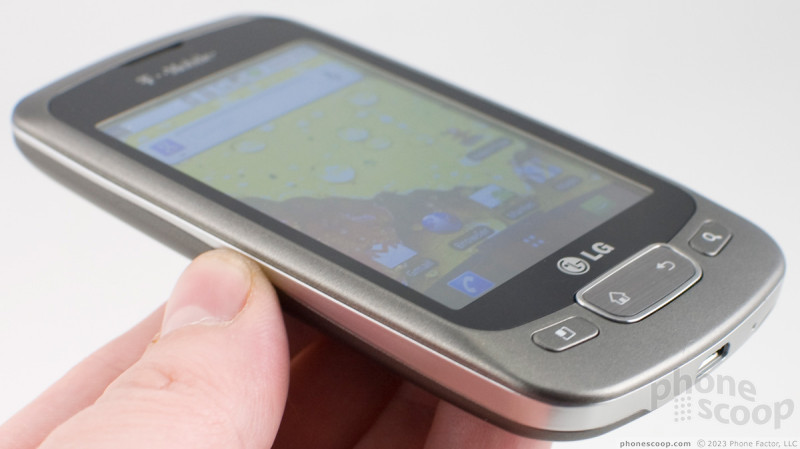






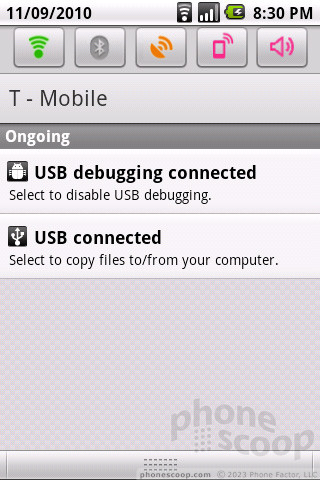





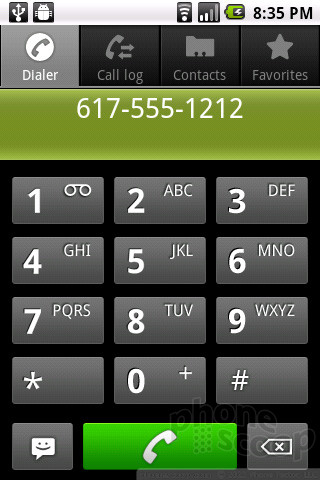




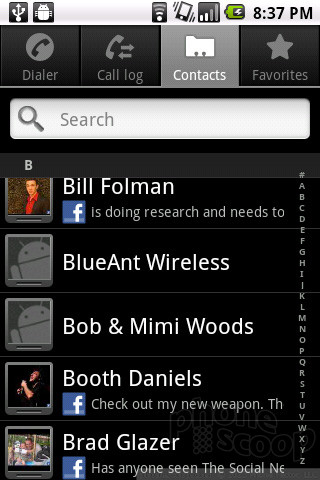



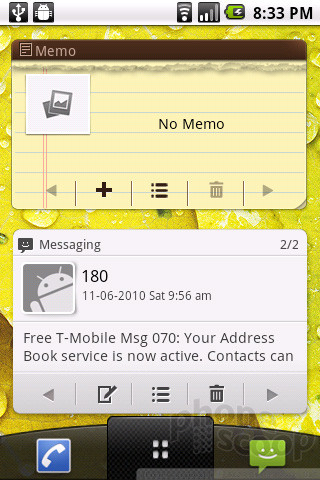



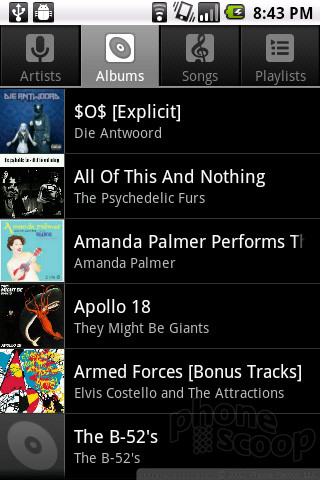




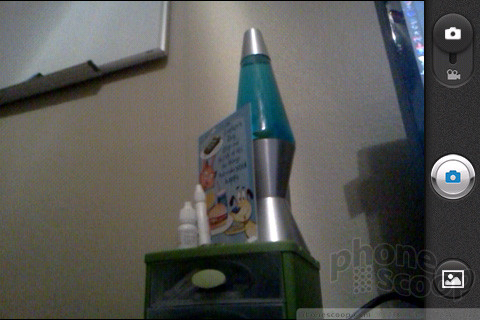





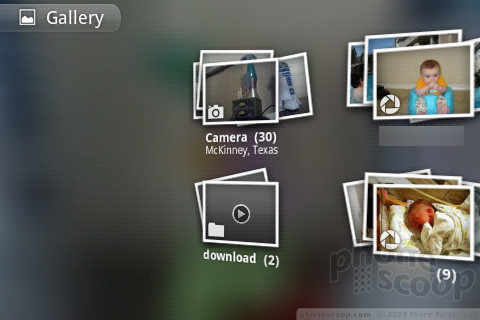














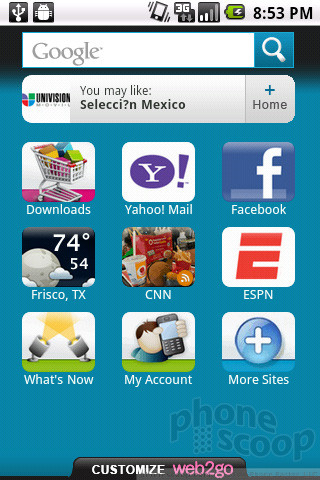



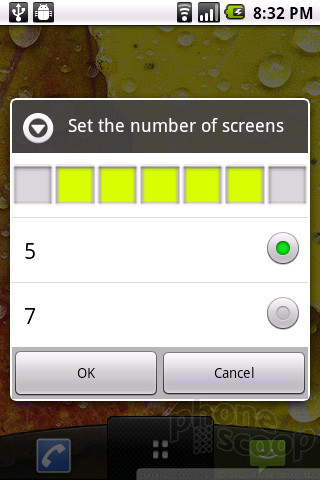




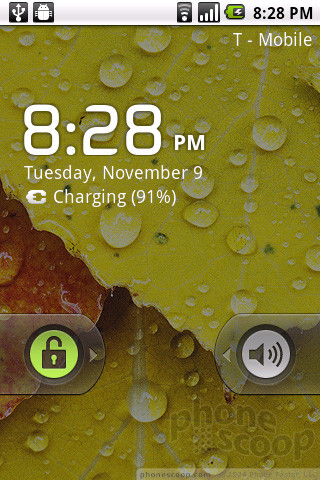



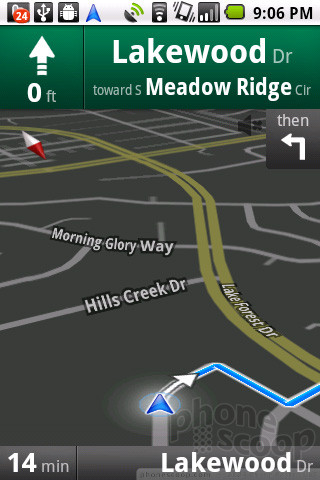







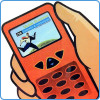 CTIA Fall 2010
CTIA Fall 2010
 Samsung Refines its Foldable Phones
Samsung Refines its Foldable Phones
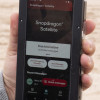 Qualcomm Taps Iridium for Satellite Connectivity
Qualcomm Taps Iridium for Satellite Connectivity
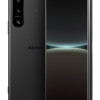 Sony's Newest Compact, High-End Phone is the Xperia 5 IV
Sony's Newest Compact, High-End Phone is the Xperia 5 IV
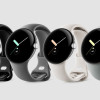 Google's Pixel Watch is Here
Google's Pixel Watch is Here
 LG Optimus T
LG Optimus T



